2022.07.02.28
Files > Volume 7 > Vol 7 No 2 2022
Zainab A.Makawi and Suhad Yasin Jassim
Natural History Research and Museum Center, University of Baghdad, Iraq; [email protected]
Natural History Research and Museum Center, University of Baghdad, Iraq;
* Correspondence: [email protected]
Available from: http://dx.doi.org/10.21931/RB/2022.07.02.28
ABSTRACT
Intestinal parasites present in freshwater from the Al- Fallujah, Al- Habbaniyah and Al-Alwarar, of the Euphrates river in Iraq are Cryptosporidium spp (25.3%), Giardia sp (3.3%), Eimeria sp (3.3%), Pinworm eggs (3.3%), Naegleria sp (15.3%), Lecane niwati (1.3%), Trichomonas hominis (19.3%), Acanthamoeba spp (24.6%), Entamoeba coli (20.6%), Balantidium coli (12%), Ascaris sp (3.3%), Volvox sp (26%), Chilomastix mesnili (4%), Pelomyxa palustris (2.6%), Trinema enchelys (2.6%), Actinophrys Sol (7.3%), Amobea Vespertilio (9.3%), Rhabditea (5.3%), paramecium bursaria (9.3%), cyst of cestode (6%), Oocyst protozoa (16%), Euglena gracilis (10.6%).were isolated. The study's goal was to isolate some of the parasites that pollute the Euphrates water in Anbar Province and their impact on the health of living species and swimmers.
Keywords. Acanthamoeba spp, Cryptosporidium, Fresh water, Giardia, Rotifer.
INTRODUCTION
Water pollution is a major global issue requiring ongoing analysis and reform of water resource programs in all situations, from the international level to individual aquifers. As a result, water contamination is a leading source of mortality and disease worldwide 1,2. Contamination of community water systems can cause disease in many people 3.
Waterborne parasites are parasitic protozoans that infect humans, domestic animals, and wildlife all over the world, at least 325 parasitic protozoan infection outbreaks linked to water have been proved around the world 4. There's a direct link between the prevalence of some sponger infections and the presence of the causative agent in water 5. In certain countries, parasitic illnesses are relatively widespread.
In Iraq, the parasite infection is widespread and has a diverse distribution. Helminth and Protozoa parasites have been found in various water sources, with a higher prevalence of contamination in rural villages of marshland. This higher prevalence of water supply contamination may be explained by poor sanitation and hygiene, low socioeconomic status, a lack of acceptable health and biological process education, and contamination of water with animal and human waste material 6. This study aims to show the prevalence of protozoa and parasites in the Euphrates river, which is a public health threat when consumed or gone swimming in.
MATERIALS AND METHODS
Study area of Anbar Province
Area1: Al- Fallujah
Area 2: Al- Habbaniyah
Area 3: Al-Alwarar
Samples collection
150 samples were collected from three locations in Anbar Governorate (Al- Fallujah, Al- Habbaniyah, and Al-Alwarar), with 50 samples distributed from each area. All of the samples were collected in a 300 ml bottle labeled with the location from different parts of the river (from the cliff) and collection date. The water samples were sedimented by clinical centrifuge (approximately 2300rpm) for 1 minute 7. Transfer several loop-fulls of material from the surface film to a clean slide with a bacteriologic loop after 1 to 2 minutes, and cover with a coverslip. The samples were also diagnosed using direct and an iodine stain. Examine under a low magnification of 10x, then under a high magnification of 40x and 100x 8.
RESULTS
The recent research found that In freshwater from opposing banks of the Euphrates river, A total of Twenty two genera and species of harmful and nonpathogenic parasites were found In freshwater of the Euphrates river, as indicated in Table 1, Figures (1 to 21). Cryptosporidium spp (25.3%), Giardia sp (3.3%), Eimeria sp (3.3%) Pinworm eggs (3.3%), Naegleria sp (15.3%), Lecane niwati (1.3%), Trichomonas hominis (19.3%), Acanthamoeba spp (24.6%), Entamoeba coli (20.6%), Balantidium coli (12%), Ascaris sp (3.3%), Volvox sp (26%), Chilomastix mesnili (4%), Pelomyxa palustris (2.6%), Trinema enchelys (2.6%), Actinophrys Sol (7.3%), Amobea Vespertilio (9.3%), Rhabditea (5.3%), paramecium bursaria (9.3%), cyst of cestode (6%), Oocyst protozoa (16%), Euglena gracilis (10.6%).
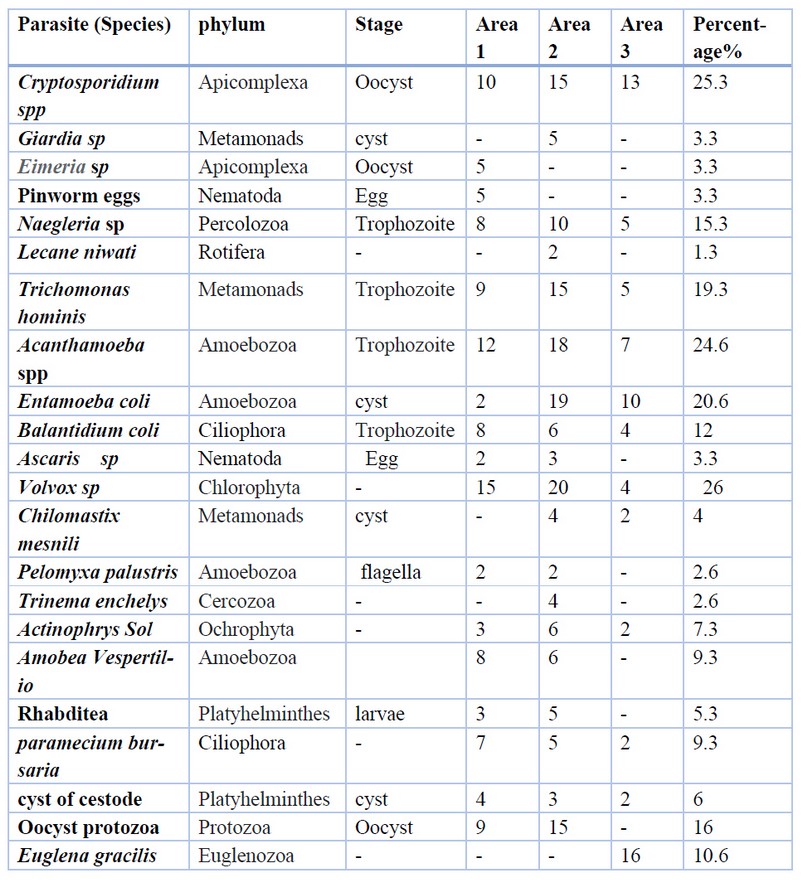
Table 1. Prevalence of parasites and protozoa in the freshwater of studied areas
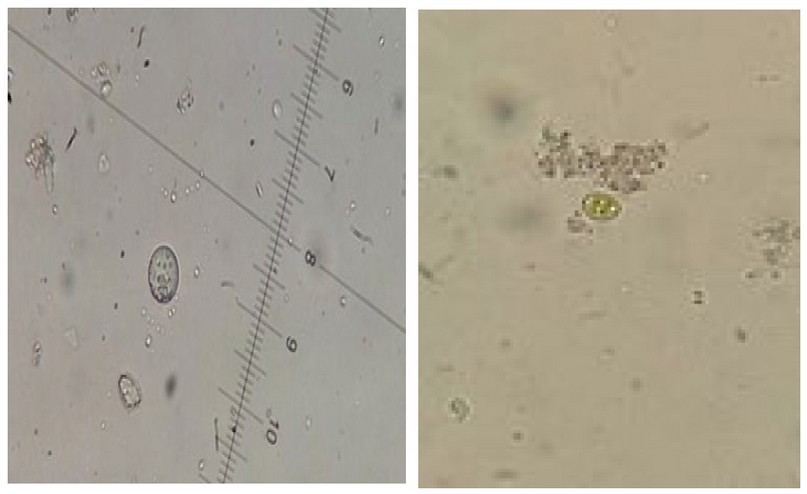
Figure 1. Cryptosporidium spp oocyst. Figure 2. Giardia sp cyst.
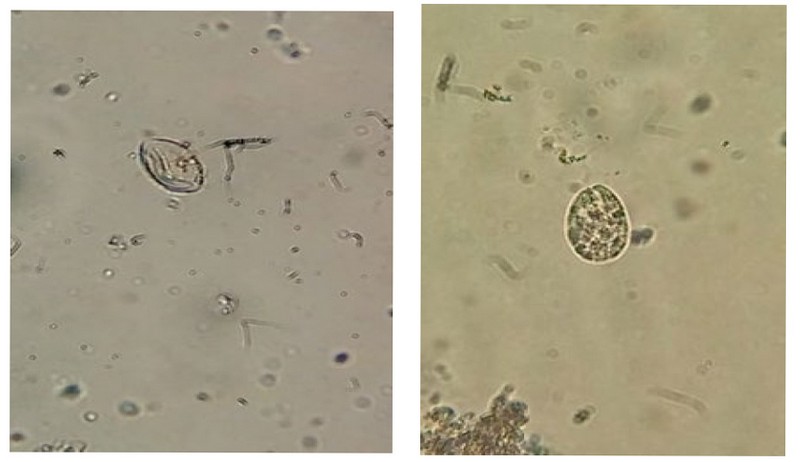
Figure 3. Pinworm eggs. Figure 4. Naegleria sp trophozite.
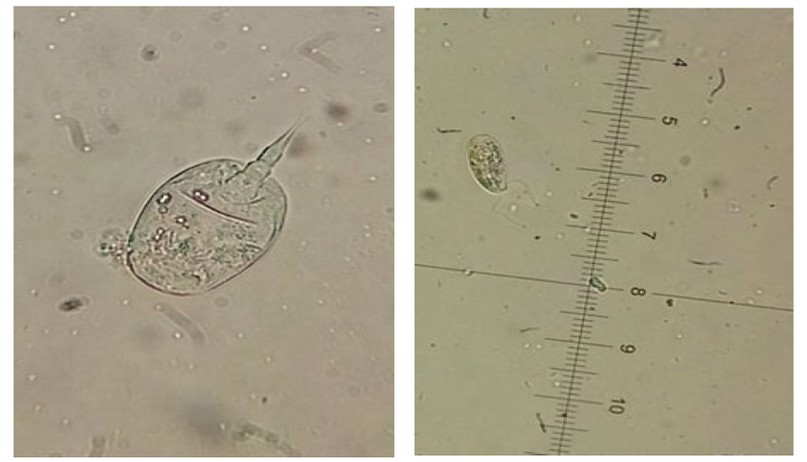
Figure 5. Lecane niwati (Rotifera). Figure 6. Trichomonas hominis (Trophozoite).
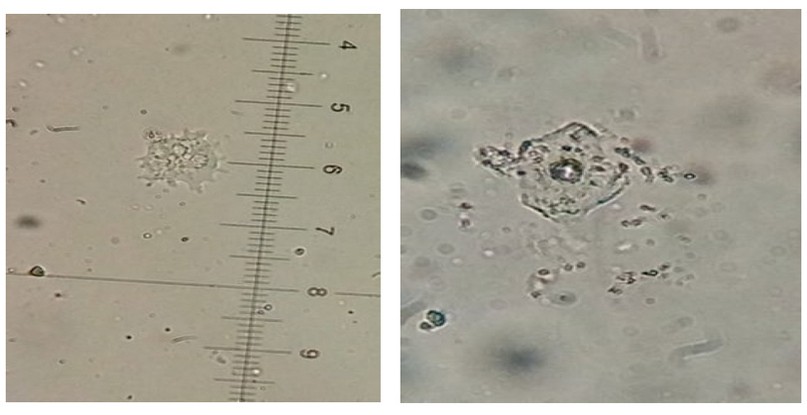
Figure 7. Acanthamoeba spp (left and right).
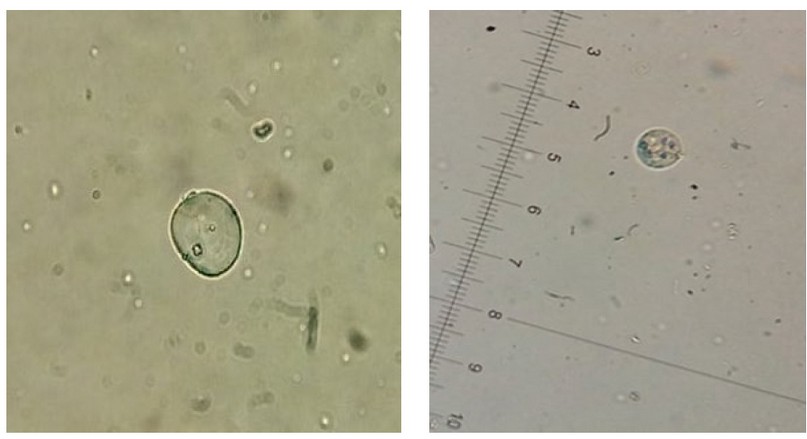
Figure 8. Eimeria Oocyst. Figure 9. Entamoeba coli (cyst).
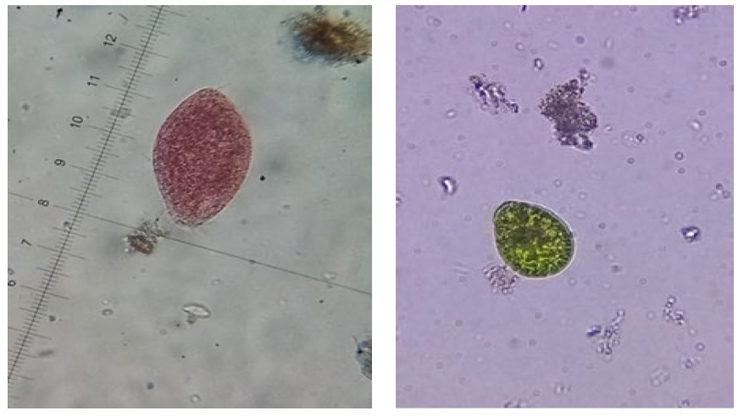
Figure 10. Balantidium coli (left and right ) Trophozoite.
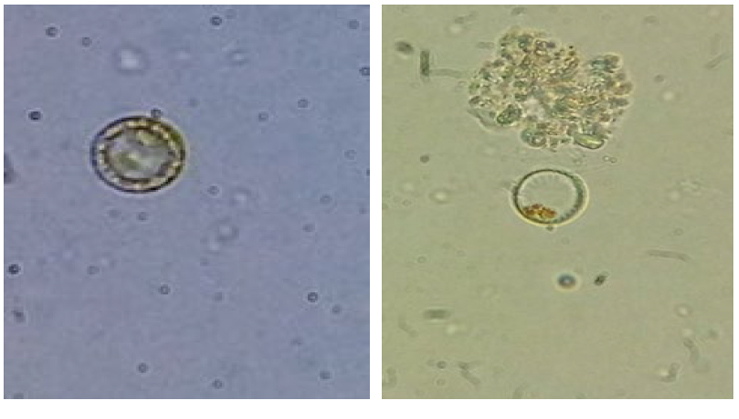
Figure 11. Ascaris egg Figure 12. Volvox sp.
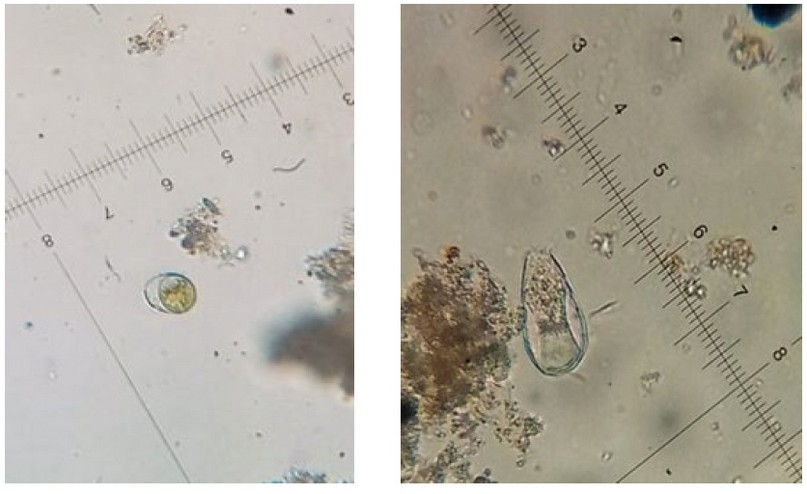
Figure 13. Chilomastix mesnili (cyst). Figure 14. Pelomyxa palustris.
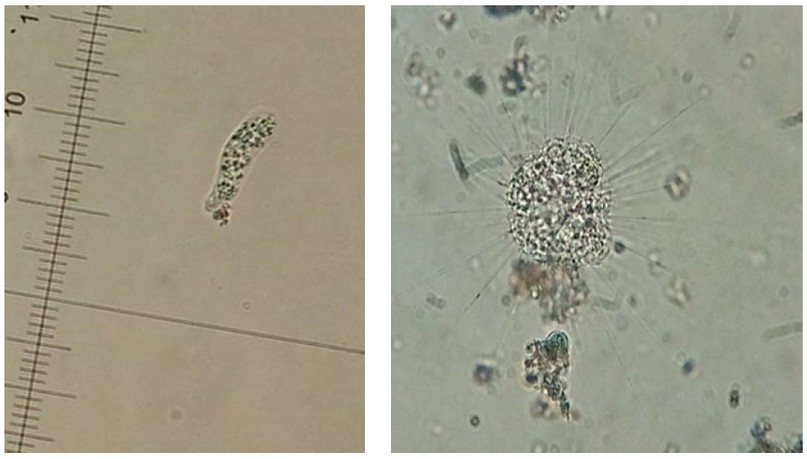
Figure 15. Trinema enchelys. Figure 16. Actinophrys Sol.
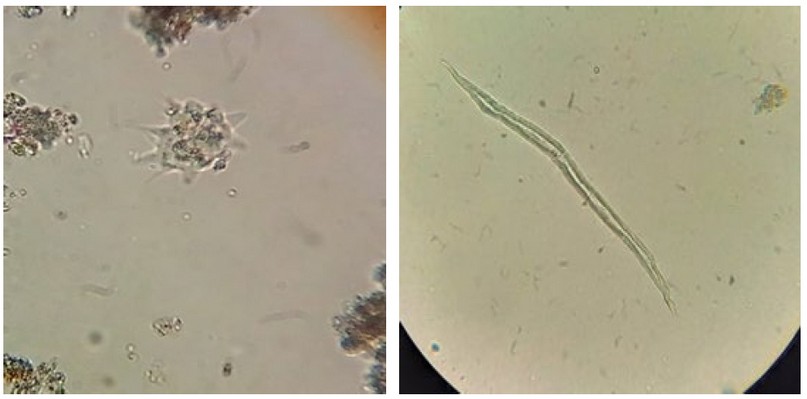
Figure 17. Amobea Vespertilio. Figure 18. Rhabditea larvae.
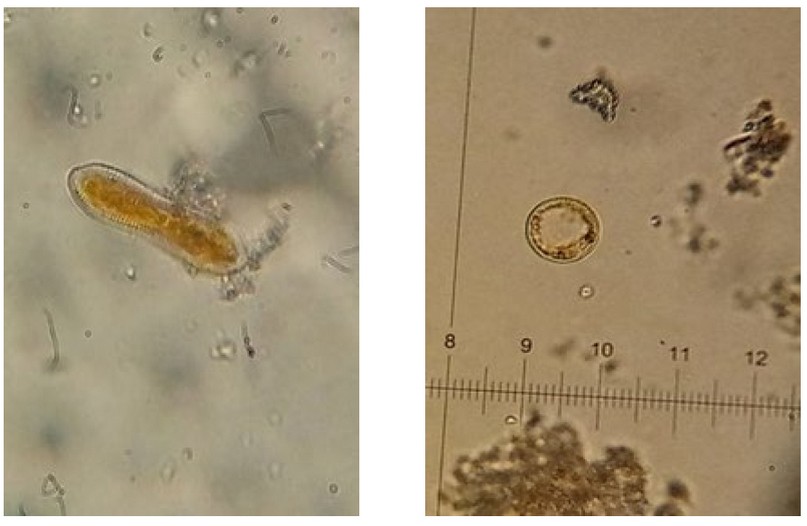
Figure 19. paramecium bursaria . Figure 20: cyst of cestode.
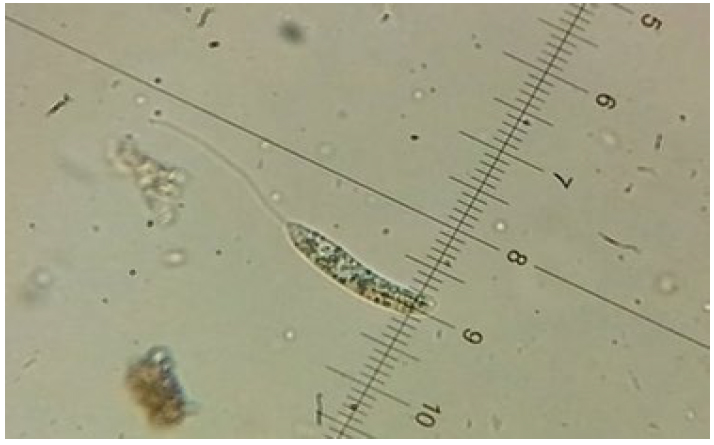
Figure 21. Euglena gracilis.
DISCUSSION
The current study revealed that freshwater was contaminated with Twenty two genera and species of parasites and protozoa, with varying frequencies among the study areas. This discrepancy arises from mixing sewage with river openings in some regions. This study is similar to others that have documented parasite contamination of river water, such as 9, which found pathogenic intestinal parasites in the freshwater of the Tigris River in Baghdad, Iraq. Furthermore, the current study found the most significant percentage of Cryptosporidium sp infection (33.3%), similar to 9, which found 31.6 % in Tigris River freshwater. In freshwater of the Tigris River, Diyala province, 10 found the highest infection rate with Cryptosporidium sp (60 %), followed by Acanthamoeba sp (50 %), Rabditae larve (40 %), and Entamoeba coli (40%). This investigation confirmed 11, 12, that the Tigris river water was contaminated with pathogenic parasites.
Al-Dulaimi et al. revealed the following parasites in the drinking water of Babylon province: Giardia lamblia, Cryptosporidium sp. Entamoeba coli and Balantidium coli 13 revealed a concern to public health. In the current study, Entamoeba coli was found in 20.6 %, similar to the results of 13, who found Entamoeba coli in 19.5 % of tank water, rivers, and wells water in three districts (Abi-Gharaq, Al-Kefel, and Al-Neil).
A recent study found that the fresh water in these three places contains several pathogens and nonpathogenic parasites, making the water unsafe to consume without treatment and unsafe for swimming for people of all ages, particularly youngsters 14. 15 . Water contamination with various pollutants for the spread of parasitic illnesses. In addition to sanitation and a lack of personality for cleaning 16. Many people living in these areas, particularly farmers, were more infected with these parasites 17, which cause acute diarrhea, which could be a severe public health problem in Iraq, especially during hot seasons when drinking raw water.
Nonparasitic protozoans that live in freshwater are known as free-living amoebae. These amoebae have been proven to be infective in humans, causing a deadly disease that affects the central nervous system 18. The Acanthamoeba genus is primarily recognized for infecting and inflaming the eyes 19, 20, 21. When the environment's temperature is high enough, these amoebae multiply in sufficient numbers to cause illness 22. In the freshwater of the Tigris River, completely distinct morphologies of free amoebae have been recorded.
CONCLUSIONS
The current study concludes that the freshwater of the Euphrates River in Anbar Governorate is contaminated with pathogenic and nonpathogenic parasites by isolating several types of parasites that have a pathological effect on living organisms (human and animal).
Author Contributions: The current study was based on references borrowed from the Natural History Research Center and Museum / University of Baghdad / Iraq. The diagnosed samples were photographed, and the article was edited and written with the help of scientific sources.
Funding: "This research received no external funding".
Institutional Review Board Statement: The article's title is approved by the scientific institution at the university, as it shows the significant impact of water on the health of animals and living organisms in general.
Acknowledgments: I thank those who helped me with the references I relied on to diagnose samples at the Natural History Research Center and Museum / University of Baghdad / Iraq.
Conflicts of Interest: "The authors declare no conflict of interest.".
REFERENCES
1.Pink, D.H. Investing in Tomorrow´s Liquid Gold (2006). http://finance.yahoo.com/personal-finance/.
2.West, L. World Water Day: A Billion people worldwide lack safe drinking water, ( 2006).
http://environment.about.com/od/environmentalevents/a/waterdayqa.htm.
3.Barwick, R.S; Levy, D.A; Craun, M.J ; Beach Calderon, R.L. Surveillance for waterborne disease outbreaks. Morbidity and Mortality. Weekly Report Surveillance Summary, (2000). 49, 1-21.
4.Kramer, M.H; Quade ,G; Hartemann, P ; Exner, M. Waterborne diseases in Europe-1986-96. Journal of the American Water Works Association, (2001). 93, 48-53.
5.Yousefi, Z; hezarjaribi, H; Enayati, A ; Mohammad poor, R. Parasiticcontamination of wells drinking water in Mazandaran province. Iran Journal of Environmental Health Science and Engineering (2009), 6 (4): 241- 246.
6.Jarallah, H. The Role of risk factors in the increase of leishmaniasis (Black fever) in marshlands of southern Iraq: A review. Proceeding of the 3td Marsh Rehabilitation Symposium. 243-248.
7.Chatterjee, K.D. Human parasites and parasitic disease. Physician, R.G. Kar. Med. Coll. Belgachia, Calcutta(1952).537-547.
8.Al-Joobori, T. I. Medical parasitology laboratory manual medical helminthology. Department of medical microbiology. Med Coll Al-Nahreen Univ.(2002)., 159p.
9.Hadi, A. M ; Makawi, Z.A. Pathogenic intestinal parasites found in fresh water of the Tigris River. Online Journal of Veterinary Research, (2013). 17(11), 608-619.
10.Makawi, Z.A. prevalence of pathogenic parasite in river water in Dilyala Provence. Inter. J. of advan. Biological research, (2018). VOL.8 (2) 2018: 264-267.
11.Al-Fahdawi, H. Study on the contamination of different water sources with pathogenic parasites in Ramadi city. M.Sc. Thesis. College of Science- University of Al-Anbar, (2002). 93.
12.Zahraa, Y.K. Ecological and Taxonomic Study of Protozoa Community in the East Bank of River Tigris within Baghdad City. A Thesis Baghdad, College of Science, Biology Department in Partial Fulfilment of the Requirements for the Degree of Master of Science in Zoology, (2013), 146.
13.Al-Dulaimi, F.H; Al-Hamairy, A.K; Shlash, S.A ; Al-Hussaini, F.M. Investigation of Parasites in Drinking Water Sources of Three Suburban in Babylon Province. Journal of Babylon University. Pure and Applied Sciences, (2013). 21(3), 812-818.
14.Al-Haidari, S.S; Aref , H .S; Findukly, F ; Entowan. A study on cases of diarrhea admitted to the University Hospital. Iraq Journal Medicine Science, (2000) 1(1), 65-70.
15.Abu Mourad, T.A. Palestinian refugee conditions associated with intestinal and diarrhoea: Nuseirat refugee camp as a case study. Journal Royal Institute Public Health, (2004). 118(2), 131-142.
16.Al-Dulaimi, F.H.A. Prevalence of intestinal parasites among outpatients for two hospitals at Al-Hilla Province. Karbala Journal Science, (2007). 5(4), 566.
17.Al-Mosa, A.H.A. Epidemiological study of the parasitic causes of some intestinal disorders of human in Al-Hilla city. MSc. Thesis Collage of Medicine, Kufa University , (2002). 92 pp.
18.Fowler, M ; Carter, R. F. Acute pyogenic meningitis probably due to Acanthamoeba sp.: a preliminary report. Brit Med J, (1965) 2: 740-742.
19.Jogwuwes,S; Pariyakanok, L; Charoenkorn, M; Yagita, K ; Endo,T. Heterogeneity in cyst morphology within isolates of Acanthamoeba from keratitis patients in Thailand Trop. Med. Internat. Health, (2000) 5(5): 335-340.
20.Hansen, B ; Kronborg, G. Acanthamoeba Keratitis in a non-contact lens wearer with human immunodeficiency virus. Scand J Infect Dis, (2003). 35(3): 207-209.
21.Speer, E.C; Hofmeister, E.M ; Cohen E.J. An atypical presentation of Acanthamoeba keratitis in a non-contact lens wearer. Eye and Contact Lens (2003). 29(1): 21-22.
22.Carter, R. F. Primary amoebic meningoen cephalitis. Trans Roy Soc Trop Med Hyg (1972) 66: 193-208.
Received: 29 January 2022 / Accepted: 10 March 2022 / Published:15 May 2022
Citation: Makawi Z A, Suhad Yasin Jassim. Isolation of different parasites from the freshwater of Euphrates River in Anbar Province, Iraq. Revis Bionatura 2022;7(2) 28. http://dx.doi.org/10.21931/RB/2022.07.02.28
